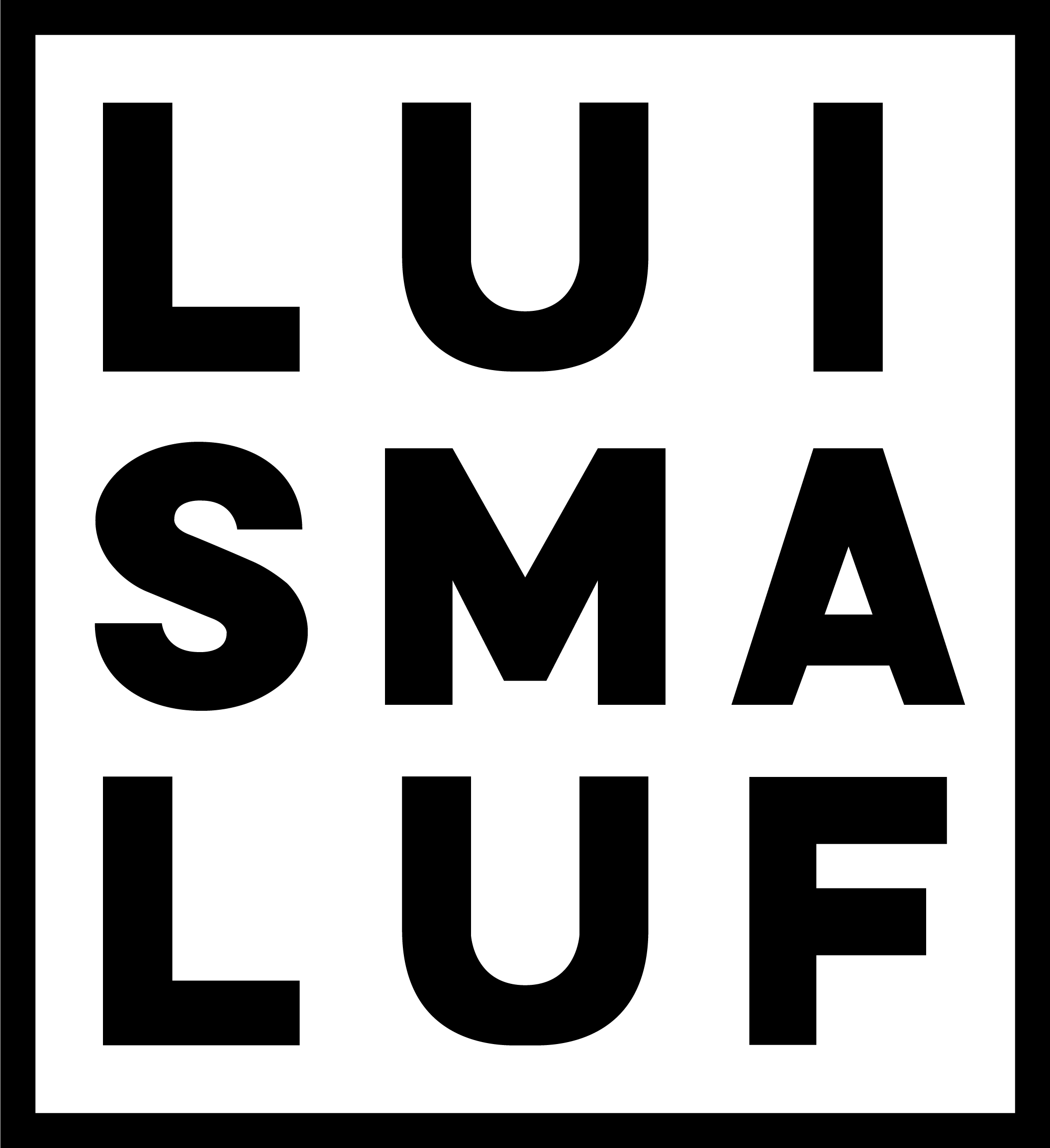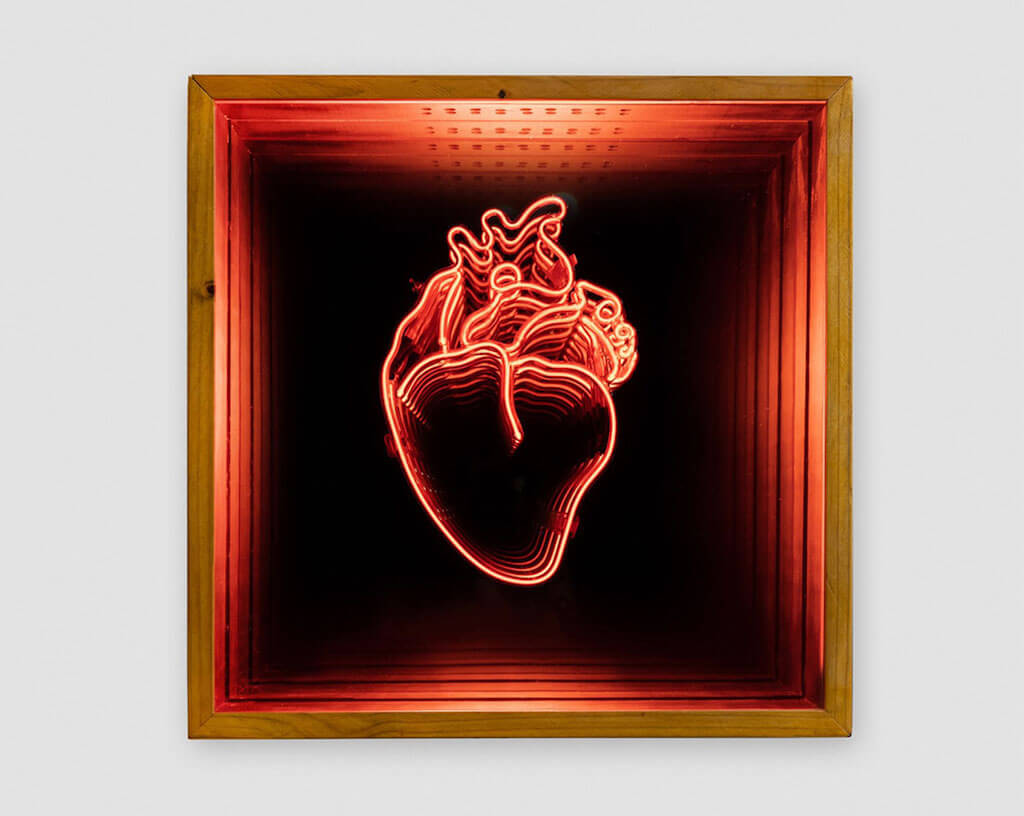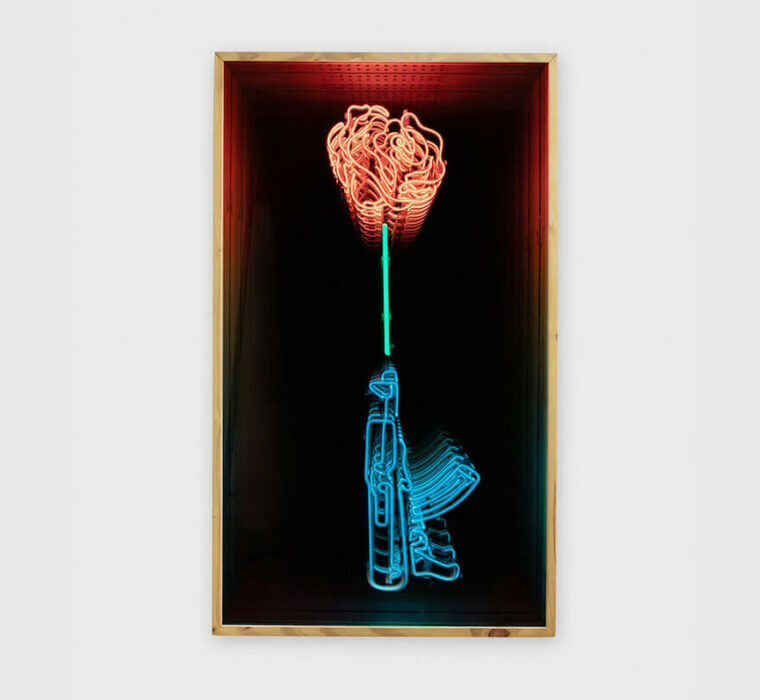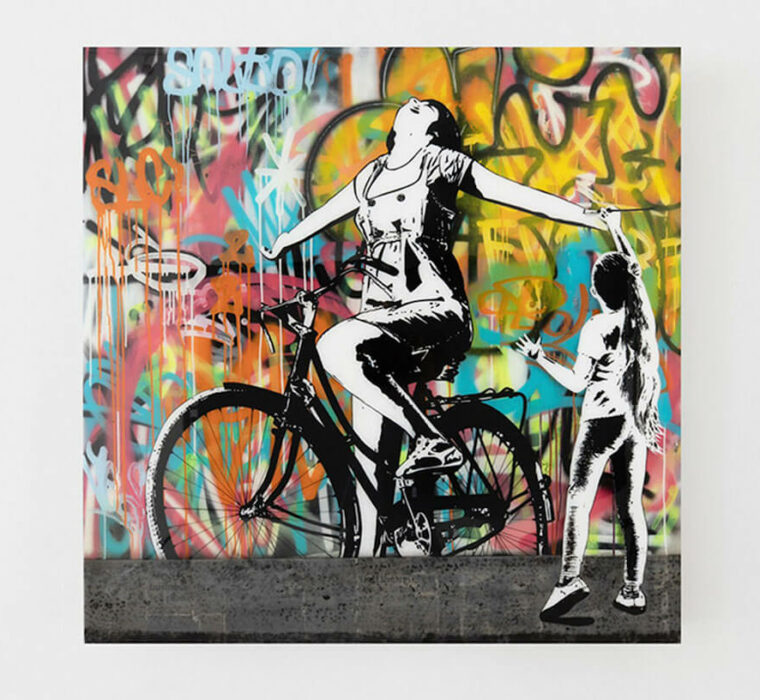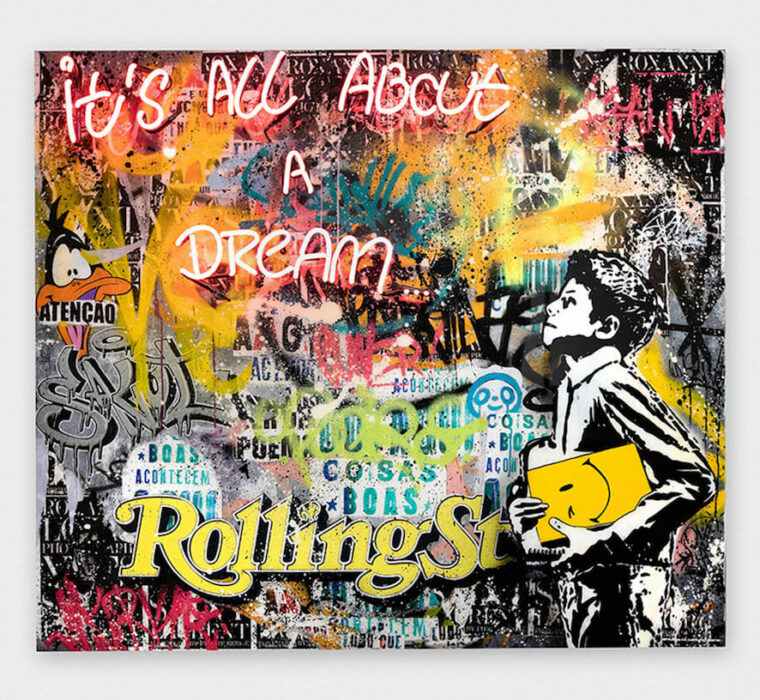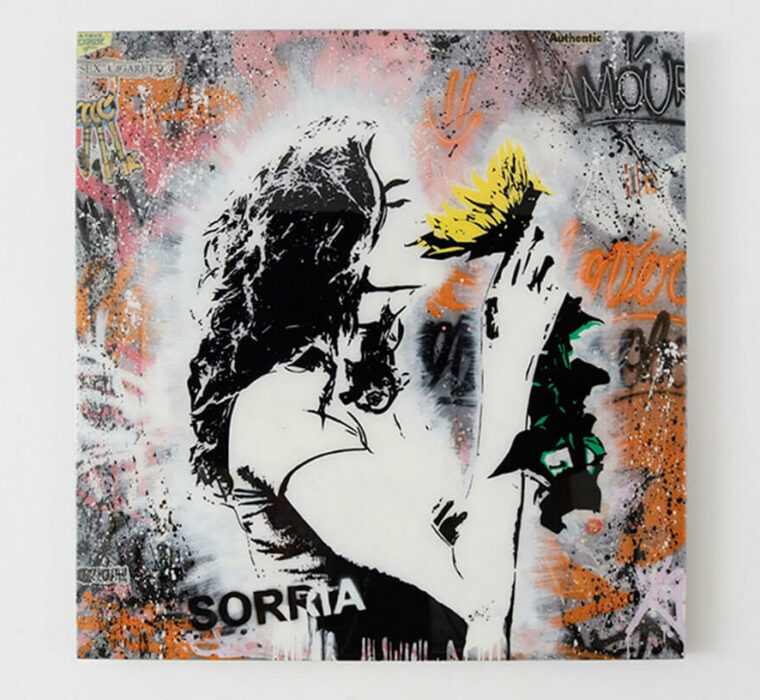Gian Luca Ewbank
Gerúndio
Nov 18th – Dez 17h 2022
Galeria Luis Maluf
Rua Peixoto Gomide, 1887 – Jardins
Mon – Fri: 10am – 7pm
Sat: 11am – 5pm
The multiple character of the materials and the encounter between word and image are two guidelines of the poetics of Gian Luca Ewbank, an artist from São Paulo living in Rio de Janeiro, who has his fourth solo show at the Luis Maluf Galeria de Arte. Gerúndio. It follows the successful Impermanência, which took place in the same space last year, and deepens investigations and approaches that couple other concepts and visualities. It is a salutary evolution, since in these frenetic times of maximized circulation of almost everything we can imagine, there is more than enough substrate for a production also in constant movement by the artist.
Initially, one can notice this affection and persistence in the labor and fascination with different materialities. The main set of Gerúndio’s pieces explores the two-dimensionality, is formed in particular by resin and its glossy effect and, in more grounding ideas, the use of collage as the predominant language. Not a collage of paper and glue, but something more destabilizing, in face of the bombardment of signs we face daily, a telematic bric-a-brac thought, to say the least.
Besides the pieces on canvas, this thought of juxtaposition and mixing of diverse elements expands into space in Ewbank’s three-dimensional works. And it is relevant to notice that the artist opts for neon. From this use, much employed by artists who formulate works in special correlation with writing, it is perceptible to understand that he is enchanted by such materiality by the mix between message and appeal, transparency and presence, besides the seductive and decodable scope that neon is located and traverses with ease.
“Before Dadaism and Surrealism began to pursue, in Rimbaud’s words, ‘the systematic disturbance of the senses’ by pictorial and other means, the fascinating paradox of being able to distend reality through the medium that was a priori its most faithful mirror, the photographic image, had already been explored many times – in illustrated magazines and, above all, in popular postcards. ” argues the important critic Dawn Ades, a specialist in the two noisy avant-garde currents of the 20th century. Thus, this search for the marvelous in banality by means of specific expedients has among its adepts artists like Ewbank, who, nowadays, even have to filter and be more rigorous in the sense of synthesis and not so much of expansion – in times of metaverse, solipsistic behavior, parallel realities that overflow the virtual and clash with the concreteness of the real, etc.
The use of the word goes back to the precursors of Dadá and Surrealism. Unlike other avant-garde troupes, they had writers and poets as their exponents. Thus, the literary creations of names like Aragon (1897-1982), Breton (1896-1966), Éluard (1895-1952) and Tzara (1896-1963), for example, served as a subversive instrument of knowledge in the forging of a total work, improvised, open to accident and disorienting. “(…) Breton recalls the reflections of the 19th century thinker Éliphas Lévi: ‘When a desire modifies the world, that is a Word that speaks'”, art historian Arturo Schwarz points out.
Therefore, the gerunds of Gian Luca Ewbank’s speech have more connections with the persistence of daily studio work and an uninterrupted fascination with the alchemy of making, between the material creation full of concreteness, flanked by robust concepts to be fixed in the midst of such liquid, volatile times. As the brilliant thinker Byung-chul Han reflects: “Be happy is the new formula for domination. The positivity of happiness suppresses the negativity of pain. As positive capital, happiness should guarantee an uninterrupted capacity for performance. Ewbank subverts this logic and, through his striking authoriality, calls us to a critical position, which swallows consumerism and mass media driven arts of the 1960’s, for example, and helps to question and re-signify this complex world of today.
ABOUT THE ARTIST
Gian Luca is a visual artist and has also studied social communication. Gian, the “Baldacconi”, works with a wide range of materials from spray paint to concrete and brick. In his creative process, the artist conducts his research on site and within the studio, designing and allowing intuition to intervene throughout the development of the work.
Strongly influenced by Pop Art, the artist tenses provocative and metaphorical issues related to mass culture, pop iconography, and the urban environment. In some of his works, the artist explores the challenging contemporaneity after the months of collective trauma resulting from the pandemic. The idea is to provoke the dream, to inspire, collectively and individually, our personal chimeras.
Gian has had his work exhibited in fairs throughout Brazil, in addition to several solo exhibitions around the country. His works have also been exhibited in Italy, the Arab Emirates, and the United States.

